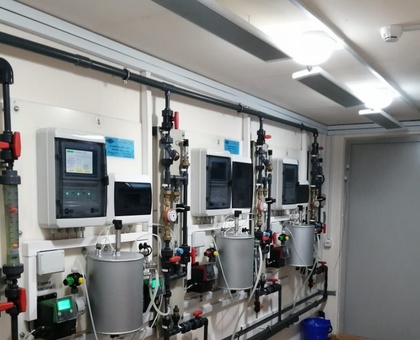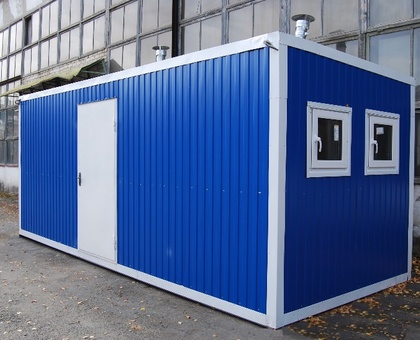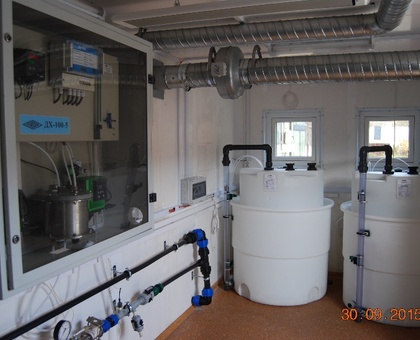Chlorine Dioxide generators for water disinfection
The system produces highly efficient and cost-effective combined desinfectant “Chlorine dioxide and chlorine” (CD), which can be used to replace liquid chlorine and sodium and calcium hypochlorites for drinking, recirculated and sewage water disinfection.
Advantage features
- completely automated process;
- CD liquid solution is produced by the system at site and is fed directly to the treated water through the pipeline;
- systems can be placed in existing premises (e.g. chlorinator rooms) as well as supplied as part of DX-100MS modular stations;
- replacement of liquid chlorine with the CD eliminates the potential threat of emergency situations related to chlorine storage, use and transportation;
- system implementation leads to sufficient reduction of operating costs as compared to use of chlorine, hypochlorites and other water disinfection methods.
Technical features
| Capacity of different modifications of systems, g/h* | 100 (disinfects 100-500 m3/h of water) |
| 500 (disinfects 500-2,500 m3/h of water) | |
| 1,000 (disinfects 1,000-2,000 m3/h of water) | |
| 2,000 (disinfects 2,000-10,000 m3/h of water)** | |
| 50 (disinfects 50-250 m3/h of water) | |
| Intake water pressure, MPa, min. | 0.8 |
| Power conumption, W, max. | 100 |
| Overall dimensions, mm | 1,000 x 320 x 1,050 |
* If necessary, system capacity can be modified from 10 g/h for chlorine dioxide up to maximum values for each modification;
** When disinfecting underground waters that does not require purification, the maximum volume of treated water can reach up to 30,000 m3/h.
Advantages of the combined desinfectant compared to chlorine and hypochlorites
- significantly higher (up to 10 times) bactericidal and oxidative activity; no formation of toxic chlororganic compounds;
- effective dose of the desintectant is 6-20 times lower than chlorine and hypochlorites;
- has a strong disinfecting effect within a wide range of water pH;
- extended disinfecting effect (over 7 days) prevents secondary contamination of water in water-distribution system;
- has a strong effect on bacteria, viruses, spores and algae;
- reduces the content of ferrum, manganese as well as sulfides, cyanides and organic compounds in water;
- has a strong odour-removing effect, improves drinking water taste;
- does not require organization of sanitary protection zones around water-treating facilities;
- removes and prevents formation of biofilms and rust in pipelines and equipment;
- raw materials costs decrease by 1.5-2 times;




